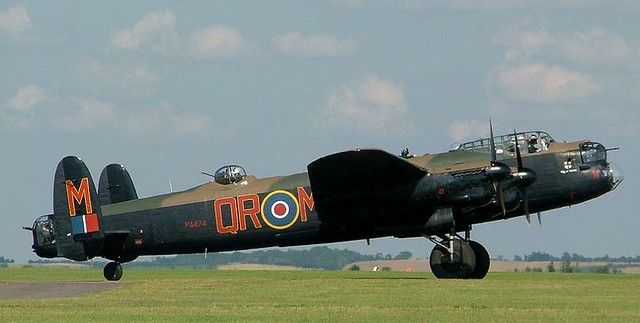Two very good friends of Hungerford Arcade, Colleen and Mike Kent, who organise the West Berkshire Classic Vehicle Club Show for us (Sunday, 21st September), have sent me an article on a very special visit they made at the weekend to the Lincolnshire Aviation Heritage Centre.
Rita
Experience of a
lifetime
Dad was an Airframe
Fitter on Lancasters during World War 2, so the Lancaster Bomber has always
been my number one interest. In fact
both me, and my wife Colleen, are members of the Lincolnshire Lancaster
Association.
There are only 2 airworthy Lancasters in the world, one in England
as part of the RAF’s Battle of Britain Memorial Flight, based at Coiningsby,
Lincolnshire, the other in Canada, at the Canadian Warplane Heritage Museum. So
imagine my excitement when the Canadian’s announced they were bringing their
Lancaster FM213 over, to join with the RAF’s Lancaster PA474, for 6 weeks. During which time the 2 Lancasters would be
flying together at Air Displays. I just
had to see the 2 together.
 |
| Canadian Lancaster Bomber FM213 (VERA) |
The Canadian’s
Lancaster, known as VERA, due to her markings, arrived at RAF Coningsby on the
8th August. The 2 Lancs have
done numerous Fly Pasts and Displays since.
We have visited Lincolnshire twice to photograph the 2 Lancasters
together. On one accession we got to
RAF Coningsby, only to be told that flying was cancelled for the day, due to
low cloud. This however provided us
with an excellent photo opportunity, as both planes were manoeuvred back into
the hangar.
 |
| England's Lancaster Bomber PA474 |
During the weekend of 13th and 14th
September both aircraft were at Bournemouth Airport, having returned from the
Channel Islands, and booked to display at Goodwood Revival. Unfortunately both went unserviceable, the
BBMF one with an engine problem, and VERA with a brake fault. Both were however repaired, by 17:00 hrs, (a
Hurricane from the BBMF having flown in with the spares). The Canadian then carried out 2 local
flights, before both departed for the display at Goodwood, and returned 50
minutes later, giving the waiting crowd another unexpected treat.
.JPG) |
Mike photographing the fabulous WWII Lancaster Bomber
|
I must also mention
Lancaster NX611 at Lincolnshire Aviation Heritage Centre, at East Kirkby,
Lincolnshire, just a few miles from Coningsby.
This aircraft taxies most Saturdays, and a visit to watch this is
always
well worthwhile.
Mike Kent
 Hungerford Arcade says a big thank you to Colleen and Mike Kent for organising the West Berkshire Classic Vehicle Club car show outside the Arcade on Sunday and to the WBCVC Members for bringing along their superb vehicles. The weather was perfect, the cars were perfect and everyone had a wonderful day as you can see from the pictures. I hope you enjoy looking at these lovely vehicles which always draw a big crowd.
Hungerford Arcade says a big thank you to Colleen and Mike Kent for organising the West Berkshire Classic Vehicle Club car show outside the Arcade on Sunday and to the WBCVC Members for bringing along their superb vehicles. The weather was perfect, the cars were perfect and everyone had a wonderful day as you can see from the pictures. I hope you enjoy looking at these lovely vehicles which always draw a big crowd.









.JPG)














